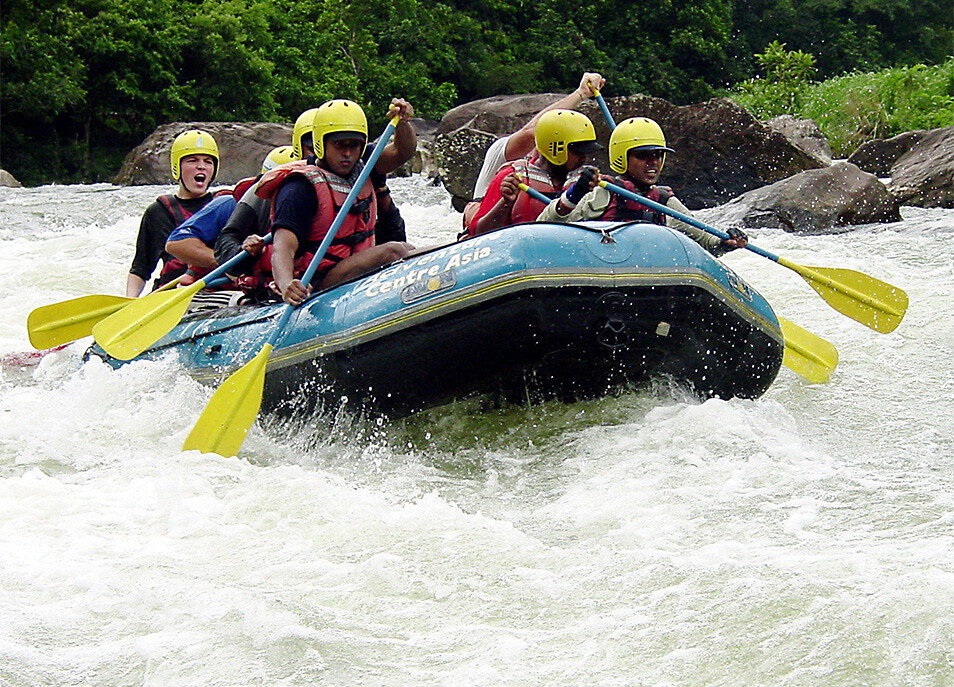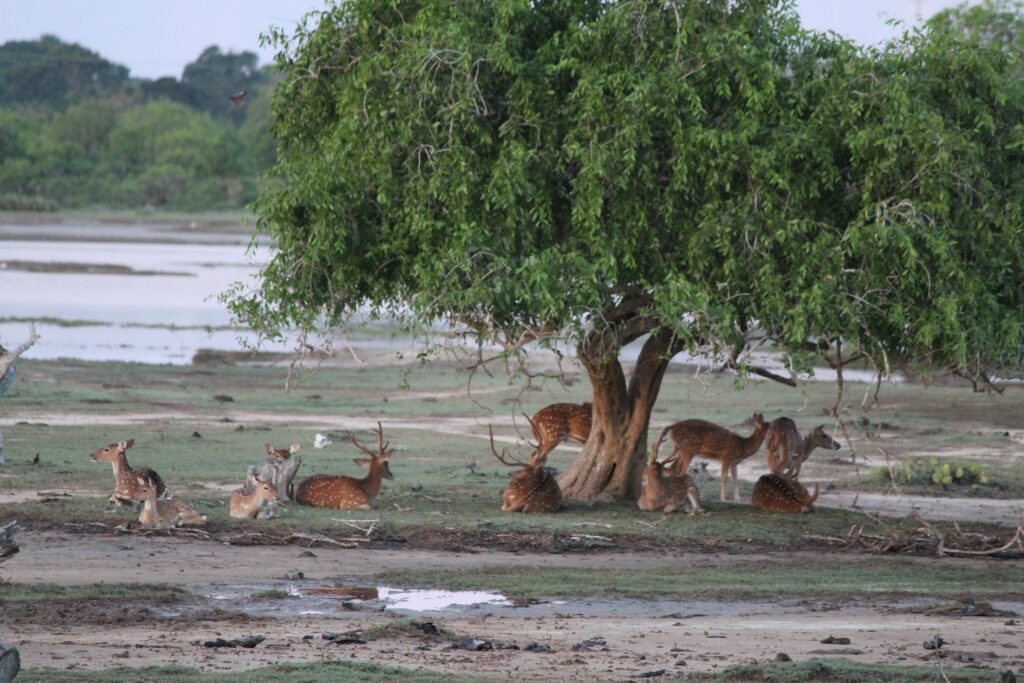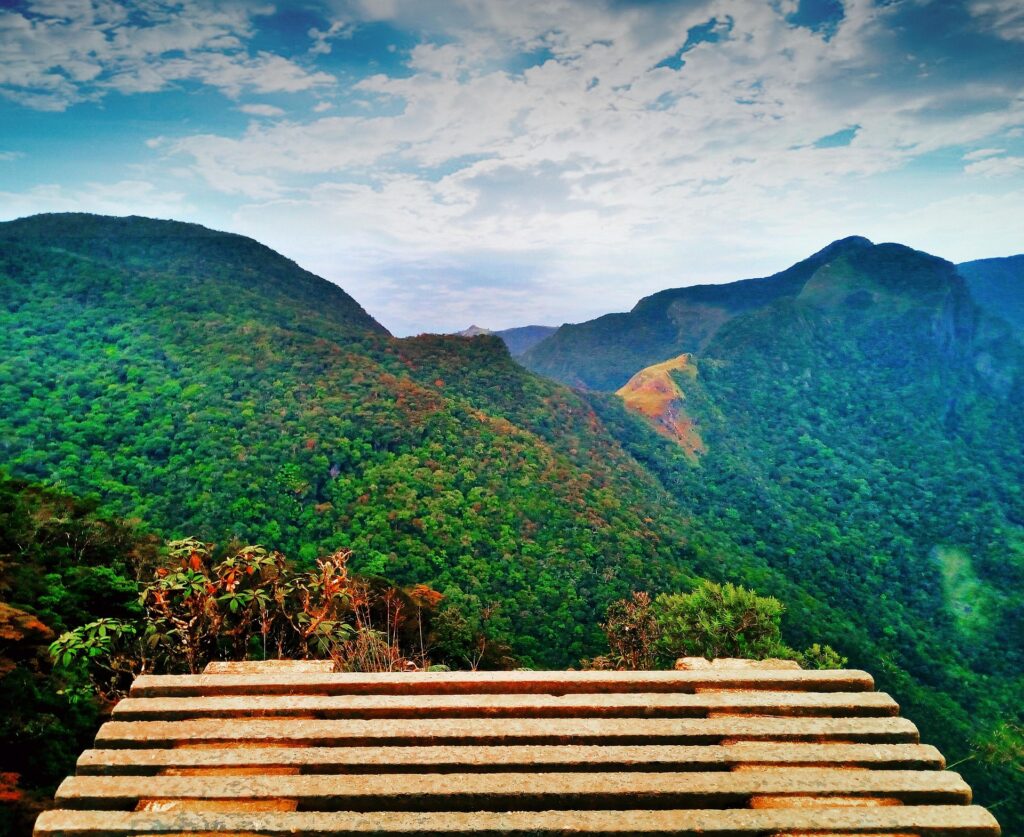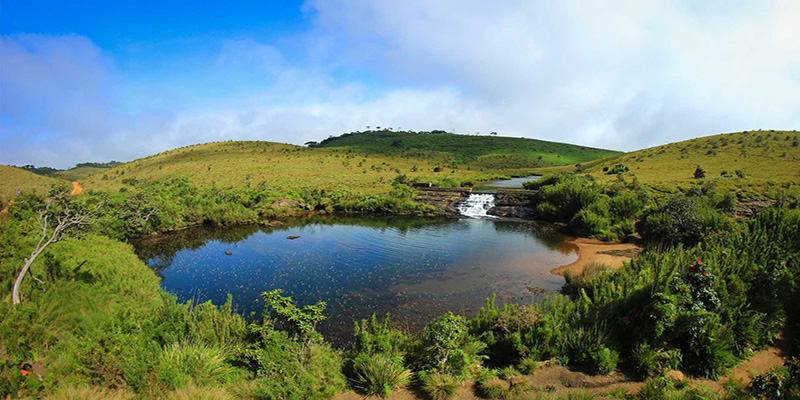Wilpattu
Discover Wilpattu National Park: Sri Lanka’s Hidden Wildlife Gem
Wilpattu National Park is one of Sri Lanka’s most stunning and lesser-explored wildlife sanctuaries, offering an unspoiled natural paradise for nature lovers and adventure seekers. Located in the northwest of the island, Wilpattu is the largest and oldest national park in Sri Lanka, renowned for its breathtaking landscapes, diverse ecosystems, and incredible wildlife encounters.
Why Visit Wilpattu National Park?
1. Rich Biodiversity and Wildlife
Wilpattu is home to an astonishing array of wildlife, including the elusive Sri Lankan leopard, sloth bears, elephants, spotted deer, crocodiles, and over 200 species of birds. The park’s dense forests and vast lakes (or “villus”) create the perfect environment for these animals to thrive, making it a must-visit destination for wildlife enthusiasts and photographers.
2. Scenic Beauty and Unique Terrain
Unlike other national parks in Sri Lanka, Wilpattu is known for its distinctive landscape featuring natural lakes, thick jungles, and open grasslands. The park’s name, “Wilpattu,” means “Land of Lakes,” referring to the many natural water bodies that attract wildlife throughout the year, creating spectacular safari experiences.
3. Less Crowded and More Authentic Safaris
Compared to the popular Yala National Park, Wilpattu offers a more serene and less touristy safari experience. The park’s vast expanse allows visitors to explore without the crowds, providing an intimate and immersive encounter with nature.
4. Ideal for Birdwatching
Bird lovers will find Wilpattu to be a paradise, with species like painted storks, jungle fowls, eagles, and owls frequently spotted. Migratory birds also visit the park, adding to the diverse avian population.
Best Time to Visit Wilpattu
The best time to explore Wilpattu National Park is from February to October, when the weather is dry, and animals gather around the lakes, making wildlife spotting easier. Early morning and late afternoon safaris offer the best chances to witness the park’s incredible fauna in action.
How to Get to Wilpattu National Park
Wilpattu is approximately 180 km from Colombo and can be reached via a 4–5 hour drive by car or private tour. The closest city is Anuradhapura, about 30 km away, making it a convenient base for visitors looking to explore both cultural and natural attractions in the region.
Things to Do in and Around Wilpattu
1. Jeep Safari Adventure
A guided jeep safari is the best way to explore Wilpattu, offering a chance to witness wildlife in their natural habitat. Experienced guides help spot elusive creatures and provide insights into the park’s ecosystem.
2. Explore Anuradhapura’s Ancient Ruins
Just a short drive away, the UNESCO-listed Sacred City of Anuradhapura is a must-visit for history lovers. Discover ancient stupas, temples, and monasteries that date back over 2,000 years.
3. Visit Thanthirimale Temple
This ancient Buddhist temple, located near Wilpattu, offers stunning rock carvings, a peaceful setting, and historical significance.
Wilpattu National Park is a dream destination for travelers seeking an off-the-beaten-path wildlife experience in Sri Lanka. With its incredible biodiversity, stunning landscapes, and fewer crowds, Wilpattu offers an unparalleled opportunity to connect with nature and witness the untamed beauty of Sri Lanka’s wilderness.
Book your Wilpattu safari today and embark on an unforgettable adventure in one of Sri Lanka’s best-kept natural wonders!
Bird watching
Bird Watching in Sri Lanka: A Haven for Nature Enthusiasts
Sri Lanka, known for its rich cultural heritage and pristine beaches, is also a hidden gem for bird watchers. With over 500 species of birds, including endemic species found nowhere else in the world, bird watching in Sri Lanka offers an unparalleled experience for nature lovers. Whether you’re an avid bird watcher or a casual nature enthusiast, Sri Lanka’s lush landscapes, ranging from rainforests to coastal wetlands, create a perfect backdrop for discovering a diverse range of avian species.
Why Sri Lanka is a Bird Watcher’s Paradise
Sri Lanka’s geographical location in the Indian Ocean, coupled with its diverse ecosystems, makes it an ideal destination for bird watching. The island offers a variety of habitats, from tropical rainforests and grasslands to coastal wetlands, ensuring that every bird watching experience is unique. With its warm climate and diverse habitats, Sri Lanka attracts migratory birds during the winter months, adding to its allure.
Top Bird Watching Locations in Sri Lanka
Sinharaja Forest Reserve
Best Time to Visit: November to April
Bird Species to Look Out For: Sri Lanka Blue Magpie, Sri Lanka Junglefowl, and White-faced Starling
Sinharaja Forest Reserve, a UNESCO World Heritage site, is one of Sri Lanka’s most biodiverse regions. Known for its dense tropical rainforests, this reserve is home to many endemic species. Bird watchers can enjoy the sights and sounds of rare birds as they explore the forest’s extensive trails.
Yala National Park
Best Time to Visit: May to October
Bird Species to Look Out For: Spot-billed Pelican, Lesser Adjutant, and Brown-headed Barbet
Yala National Park, famous for its wildlife and leopard sightings, is also an excellent destination for bird watching. With its variety of ecosystems, including dry forest, grassland, and wetlands, it is home to over 200 species of birds, including a significant number of migratory birds.
Kumana National Park
Best Time to Visit: May to September
Bird Species to Look Out For: Painted Stork, Black-headed Ibis, and Cormorants
Located in the southeastern corner of Sri Lanka, Kumana National Park is renowned for its diverse bird population. The park’s extensive wetlands are a haven for waterfowl, and it is one of the best places to spot migratory birds during the annual migration season.
Bundala National Park
Best Time to Visit: December to March
Bird Species to Look Out For: Greater Flamingo, Eurasian Curlew, and Common Redshank
Bundala National Park is a Ramsar Wetland site and an important stopover for migratory birds along the East Asian-Australasia Flyway. Bird watchers can enjoy observing a wide variety of shorebirds, waders, and waterfowl in this coastal park.
Victoria Park, Nuwara Eliya
Best Time to Visit: March to May
Bird Species to Look Out For: Indian Pitta, Orange Minivet, and White-eye
Nuwara Eliya, known as “Little England,” is a hill station that offers cool weather and a scenic environment for bird watchers. The Victoria Park in Nuwara Eliya is a popular spot to spot a variety of birds, including both endemic and migratory species.
Best Time for Bird Watching in Sri Lanka
The best time to visit Sri Lanka for bird watching largely depends on the region and the type of bird species you wish to observe. Generally, the dry season from November to April is ideal for bird watching, as the weather is pleasant, and many migratory birds flock to Sri Lanka during this period. However, different parks and reserves peak at various times of the year, with coastal areas like Bundala attracting migratory waterfowl from December to March.
Endemic Birds of Sri Lanka
Sri Lanka boasts a range of endemic bird species that make bird watching here so special. Some of the most notable endemic birds include:
Sri Lanka Junglefowl: The national bird of Sri Lanka, often seen in forests and grasslands.
Sri Lanka Blue Magpie: A striking, colorful bird found in the rainforests of Sinharaja.
Ceylon Hill Myna: Known for its unique vocalization, found in the hill country.
Yellow-eared Bulbul: A rare and beautiful bird commonly found in the forests of central Sri Lanka.
Tips for an Unforgettable Bird Watching Experience
Bring Binoculars and a Camera: Bird watching requires keen observation, and a good pair of binoculars will enhance your experience. A camera with a zoom lens is also useful for capturing the stunning avian life.
Wear Comfortable Clothing: Since many bird watching spots involve walking through forests and nature trails, it’s important to wear comfortable shoes and clothing suited for hiking.
Stay Quiet: Birds are sensitive to noise, so maintaining silence helps in spotting more species.
Hire a Local Guide: To maximize your bird watching experience, consider hiring a local guide who is familiar with the bird species and their habitats.
Bird watching in Sri Lanka is an extraordinary experience, offering unparalleled opportunities to observe a wide array of both endemic and migratory birds. With its stunning national parks, rainforests, and wetlands, Sri Lanka truly is a paradise for bird watchers. So, pack your binoculars, and get ready to explore the avian wonders of this tropical island!
Culture and Rituals
Culture and Rituals in Sri Lanka: A Journey Through Tradition and Heritage
Sri Lanka, a mesmerizing island nation in South Asia, is renowned for its rich cultural heritage and age-old traditions. Steeped in history, this paradise blends Buddhist, Hindu, Christian, and Islamic influences, creating a unique cultural tapestry that attracts millions of tourists every year. From grand religious festivals to everyday customs, Sri Lanka’s culture and rituals offer a deep insight into the island’s vibrant way of life.
Buddhist Rituals and Practices
Buddhism plays a dominant role in Sri Lankan culture, with over 70% of the population practicing Theravāda Buddhism. Ancient temples, such as the Temple of the Sacred Tooth Relic in Kandy, are spiritual hubs where devotees perform daily offerings and prayers. Poya Days, which occur every full moon, are public holidays marked by temple visits, meditation, and acts of kindness.
One of the most significant Buddhist rituals is the Perahera Festival, notably the Esala Perahera in Kandy. This grand procession features beautifully adorned elephants, traditional Kandyan dancers, fire twirlers, and drummers, reflecting Sri Lanka’s deep spiritual devotion and artistic heritage.
Hindu Traditions and Celebrations
Sri Lanka’s Hindu population, primarily Tamils, celebrate vibrant festivals that attract both locals and tourists. The Thai Pongal Festival, held in January, is a thanksgiving event where families prepare a special rice dish known as “Pongal” to honor the Sun God.
Another awe-inspiring ritual is the Vel Festival, where devotees take part in ceremonial processions, carrying decorated chariots and performing acts of penance such as body piercings. The Nallur Kandaswamy Kovil in Jaffna is one of the most significant Hindu temples, drawing worshippers from around the world.
Sinhala and Tamil New Year
The Sinhala and Tamil New Year (Avurudu), celebrated in April, marks the end of the harvest season and is one of the most anticipated cultural events in Sri Lanka. Traditional customs such as boiling milk to symbolize prosperity, lighting oil lamps, and engaging in festive games highlight the unity between different ethnic groups.
Food plays an essential role in this celebration, with special dishes like kiribath (milk rice), kokis, and kevum (oil cakes) prepared and shared among family and friends.
Traditional Sri Lankan Weddings
Sri Lankan weddings are a grand affair deeply rooted in cultural customs. The Kandyan wedding ceremony is the most popular, featuring the bride and groom dressed in elaborate attire, including the regal “Osariya” for the bride and the majestic “Nilame” costume for the groom.
The Poruwa Ceremony, a traditional wedding ritual, involves auspicious chants, betel leaf offerings, and the tying of the couple’s pinky fingers with gold thread to signify unity and commitment.
Sri Lankan Folk Dances and Music
Traditional dance forms, such as the Kandyan dance and Low Country dances, are integral to Sri Lanka’s cultural identity. These performances, often accompanied by rhythmic drumming, narrate historical and religious stories while showcasing the island’s artistic excellence.
The Kolam and Devil Dances are unique rituals performed to ward off evil spirits and bring good fortune. These traditional performances, featuring intricately crafted masks, continue to attract tourists seeking an authentic cultural experience.
Sri Lanka’s culture and rituals provide a captivating blend of spirituality, heritage, and festivity. Whether it’s witnessing a grand Perahera procession, participating in a traditional New Year’s celebration, or experiencing an elaborate Sri Lankan wedding, visitors are bound to be enchanted by the island’s deep-rooted traditions. With its diverse customs and rich history, Sri Lanka remains a must-visit destination for cultural tourism enthusiasts.
Game drive
Game Drive (Safari) in Sri Lanka: A Thrilling Wildlife Adventure
Sri Lanka, renowned for its breathtaking landscapes and rich biodiversity, offers an unparalleled safari experience through its national parks. A game drive in Sri Lanka is an exhilarating journey into the heart of nature, where wildlife enthusiasts can witness majestic creatures in their natural habitat.
Best National Parks for Game Drives in Sri Lanka
1. Yala National Park
Yala National Park is Sri Lanka’s most famous wildlife reserve, known for having the highest concentration of leopards in the world. A safari in Yala offers visitors the chance to spot leopards, elephants, sloth bears, and a diverse range of bird species. The park’s vast grasslands, lagoons, and rocky outcrops provide the perfect setting for an unforgettable wildlife safari in Sri Lanka.
2. Udawalawe National Park
Famous for its large population of elephants, Udawalawe National Park safari guarantees sightings of these gentle giants. The park is also home to water buffalo, crocodiles, and a variety of birdlife, making it a must-visit destination for nature lovers.
3. Wilpattu National Park
Wilpattu is the largest national park in Sri Lanka and offers a more serene and less crowded safari experience. The game drive in Wilpattu takes visitors through dense forests, open grasslands, and natural lakes, where they can spot leopards, elephants, sloth bears, and spotted deer.
4. Minneriya National Park
For those interested in witnessing the iconic Gathering of Elephants, Minneriya National Park is the place to be. The park hosts one of the largest elephant gatherings in the world, particularly during the dry season (July–October), when hundreds of elephants congregate around the Minneriya Tank.
What to Expect on a Game Drive in Sri Lanka
A typical safari in Sri Lanka lasts between 3 to 4 hours and takes place in open 4×4 jeeps, offering an immersive experience in the wild. Early morning and late afternoon game drives provide the best chances to spot wildlife, as animals are most active during these times.
Wildlife to See on a Sri Lanka Safari
Leopards – Found in Yala and Wilpattu
Elephants – Common in Udawalawe, Minneriya, and Kaudulla
Sloth Bears – Seen in Yala and Wilpattu
Crocodiles – Found in most national parks
Bird Species – Over 400 bird species, including eagles, owls, and hornbills
A game drive in Sri Lanka is a must-do activity for nature lovers and adventure seekers. With its diverse wildlife, stunning landscapes, and well-preserved national parks, Sri Lanka offers an authentic and unforgettable safari experience. Whether you’re spotting elusive leopards in Yala, admiring elephant herds in Minneriya, or exploring the vast wilderness of Wilpattu, every moment on a Sri Lankan safari is truly magical.
Hiking
Hiking and Trekking in Sri Lanka: A Paradise for Nature Enthusiasts
Sri Lanka, an island nation rich in natural beauty, offers some of the most breathtaking hiking and trekking experiences in the world. From misty mountains to lush rainforests, the diverse landscapes provide adventure seekers with numerous trails to explore. Whether you’re a seasoned trekker or a beginner, Sri Lanka has something for everyone.
Best Hiking and Trekking Destinations in Sri Lanka
1. Adam’s Peak (Sri Pada)
One of the most iconic hiking destinations in Sri Lanka, Adam’s Peak stands at 2,243 meters above sea level. It is a sacred pilgrimage site with a well-marked trail featuring thousands of steps. The best time to hike is during the pilgrimage season from December to May, when the weather is favorable and the path is well-lit.
2. Horton Plains National Park & World’s End
Horton Plains is a UNESCO World Heritage Site known for its unique cloud forests and montane grasslands. The 9-kilometer loop trail leads to World’s End, a dramatic 870-meter cliff that offers stunning views of the valley below. Along the way, hikers can also visit Baker’s Falls, a scenic waterfall nestled within the park.
3. Ella Rock
Ella Rock is a must-visit for trekkers looking for panoramic views of Sri Lanka’s hill country. The trail takes around 2–3 hours to complete and passes through tea plantations, railway tracks, and forested paths. The summit rewards hikers with breathtaking views of the surrounding mountains and valleys.
4. Knuckles Mountain Range
For those seeking a more challenging adventure, the Knuckles Mountain Range offers rugged trails, diverse flora and fauna, and picturesque landscapes. With multiple trekking routes, hikers can explore waterfalls, dense forests, and remote villages. It’s an ideal destination for nature lovers and wildlife enthusiasts.
5. Sinharaja Rainforest
A biodiversity hotspot, Sinharaja Rainforest is a UNESCO-listed site that provides a unique trekking experience. The dense forest is home to rare endemic species of flora and fauna, making it a paradise for eco-tourists. Guided treks are recommended to explore this pristine environment safely.
Essential Tips for Hiking and Trekking in Sri Lanka
Best Time to Visit: The best time for hiking in Sri Lanka is from December to April when the weather is dry and pleasant.
Pack Light: Wear comfortable clothing, sturdy hiking shoes, and carry essentials such as water, snacks, and a first-aid kit.
Respect Nature: Avoid littering, stay on designated trails, and follow local guidelines to preserve the environment.
Hire a Guide: For certain trails, especially in remote areas like Knuckles and Sinharaja, hiring a local guide enhances safety and provides deeper insights into the region’s biodiversity.
Start Early: Begin your hike early in the morning to avoid the midday heat and maximize your chances of spotting wildlife.
Hiking and trekking in Sri Lanka offer an unforgettable experience for adventurers and nature lovers alike. With its diverse landscapes, rich biodiversity, and well-maintained trails, the island is a top destination for outdoor enthusiasts. Whether you seek a spiritual journey up Adam’s Peak or an adrenaline-filled trek in the Knuckles Mountain Range, Sri Lanka has something spectacular to offer. Plan your adventure today and discover the natural wonders of this tropical paradise!
Sri lankan Cuisine
Discover the Rich Flavors of Sri Lankan Cuisine
Sri Lanka, the pearl of the Indian Ocean, is renowned for its vibrant culture, stunning landscapes, and, most importantly, its delectable cuisine. Influenced by a blend of South Indian, Dutch, Portuguese, and British flavors, Sri Lankan food is a unique fusion of spices, herbs, and tropical ingredients that create an unforgettable culinary experience.
Traditional Sri Lankan Dishes
Rice and Curry
A staple in every Sri Lankan household, rice and curry is a flavorful dish featuring steamed rice accompanied by an assortment of curries made from vegetables, lentils, seafood, or meat. These curries are infused with rich coconut milk and an array of spices, creating a delightful explosion of flavors.
Hoppers (Appa)
A must-try Sri Lankan delicacy, hoppers are bowl-shaped pancakes made from a fermented rice flour and coconut milk batter. The most popular variation, the egg hopper, features a soft, runny egg in the center, perfect when paired with spicy sambols and chutneys.
Kottu Roti
Known as Sri Lanka’s favorite street food, kottu roti is a stir-fried dish made with chopped godhamba roti (flatbread), vegetables, egg, and your choice of chicken, beef, or seafood. Served with spicy curry sauce, it offers a satisfying crunch and an aromatic taste.
Lamprais
A legacy of Dutch Burgher influence, lamprais consists of rice cooked in stock, accompanied by a variety of meat curries, fried eggplant, and sambol, all wrapped in a banana leaf and baked for a rich and aromatic flavor.
Spices and Flavors
Sri Lankan cuisine is distinguished by its bold use of spices such as cardamom, cinnamon, cloves, curry leaves, and chili. Coconut milk is a key ingredient that balances heat with a creamy texture, while pandan leaves and tamarind add depth to many traditional dishes.
Must-Try Sweets and Desserts
Watalappan
A creamy coconut custard pudding made with jaggery, eggs, and a hint of cardamom, watalappan is a favorite Sri Lankan dessert with a silky texture and rich sweetness.
Kavum and Kokis
During Sri Lankan New Year celebrations, locals enjoy deep-fried treats like kavum (sweet oil cakes) and kokis (crispy rice flour snacks), which offer a delightful crunch and sweetness.
Whether you’re exploring the bustling streets of Colombo, the coastal towns of Galle, or the scenic hills of Kandy, you’ll find authentic Sri Lankan restaurants, street food vendors, and luxury resorts serving these mouthwatering dishes. Many food tours in Sri Lanka also offer hands-on experiences where you can learn to cook traditional meals.
Sri Lankan cuisine is a feast for the senses, offering a blend of spicy, sweet, and savory flavors that captivate food lovers from around the world. Whether you’re indulging in a plate of fragrant rice and curry or savoring a crispy hopper, each bite tells a story of Sri Lanka’s rich culinary heritage.
Plan your food adventure in Sri Lanka today and immerse yourself in its irresistible flavors!
White water rafting
White Water Rafting in Sri Lanka: A Thrilling Adventure Amidst Nature
Sri Lanka, the pearl of the Indian Ocean, is renowned for its breathtaking landscapes, rich biodiversity, and adventure-filled activities. Among the top-rated experiences for thrill-seekers is white water rafting in Sri Lanka, an adrenaline-pumping activity that takes you through some of the country’s most scenic rivers and lush greenery.
Best Locations for White Water Rafting in Sri Lanka
1. Kitulgala – The White Water Rafting Hub
Kitulgala is the best place for white water rafting in Sri Lanka, located in the Sabaragamuwa Province, approximately 90 km from Colombo. The Kelani River, which flows through this small town, provides the perfect setting for beginner to intermediate-level rapids ranging from Grade 2 to Grade 4. This region is also famous for being the filming location of the classic movie The Bridge on the River Kwai.
2. Mahaweli River
For those looking for a more challenging adventure, the Mahaweli River rafting experience is an excellent choice. As Sri Lanka’s longest river, it features powerful rapids, breathtaking canyons, and untouched rainforests, making it a paradise for extreme sports lovers.
3. Kotmale River
Another exciting white water rafting destination in Sri Lanka is the Kotmale River, where the currents are stronger, and the surrounding landscapes are mesmerizing. This river is perfect for those seeking a mix of adventure and breathtaking natural beauty.
What to Expect from a White Water Rafting Adventure?
Whether you are a beginner or an experienced rafter, white water rafting in Sri Lanka offers something for everyone. Most rafting excursions last 1.5 to 3 hours and cover a distance of around 5 to 10 kilometers. Safety is a priority, with professional guides providing life jackets, helmets, and safety briefings before embarking on the journey.
Apart from rafting, Kitulgala also offers jungle trekking, waterfall abseiling, bird watching, and river bathing, making it a complete adventure getaway.
Best Time for White Water Rafting in Sri Lanka
The ideal time for white water rafting in Kitulgala and other regions is during the monsoon season, from April to November, when the water levels are high, making the rapids more thrilling. However, rafting is available throughout the year, with different levels of intensity depending on the season.
Why Choose White Water Rafting in Sri Lanka?
Adrenaline-Pumping Adventure: Experience the thrill of navigating through turbulent waters and exhilarating rapids.
Scenic Landscapes: Paddle through lush rainforests, misty mountains, and cascading waterfalls.
Suitable for All Skill Levels: From beginners to experienced rafters, there are different rafting routes tailored to skill levels.
Affordable and Accessible: White water rafting in Sri Lanka is budget-friendly and easily accessible from Colombo and major tourist destinations.
For adventure lovers, white water rafting in Sri Lanka is an experience of a lifetime. Whether you seek a mild yet exciting ride or a heart-racing, adrenaline-packed journey, Sri Lanka’s rivers offer the perfect playground. So, gear up, hold on tight, and get ready to conquer the rapids of this tropical paradise!



